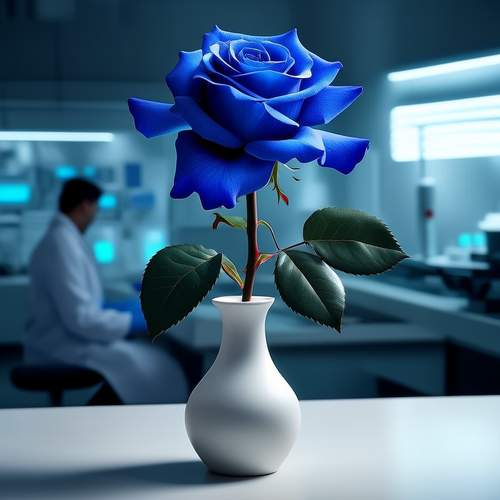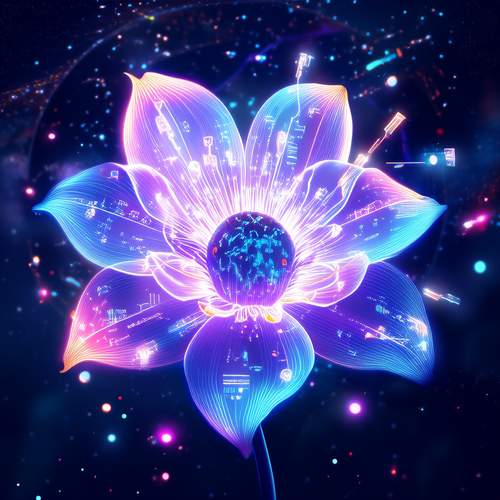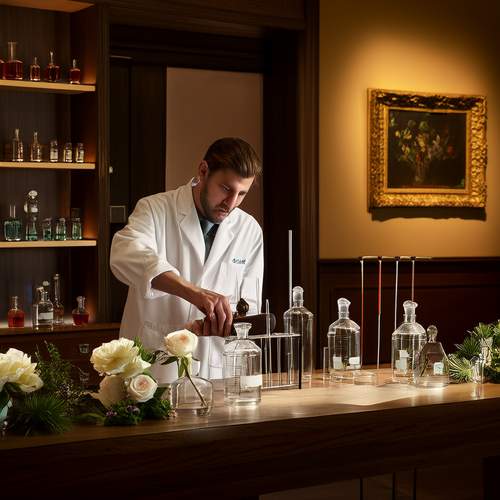The creation of the blue rose stands as one of the most fascinating achievements in the field of floral genetic engineering. For centuries, roses have been cultivated in a spectrum of colors, from deep reds to soft pinks and vibrant yellows. Yet, the elusive blue rose remained beyond the reach of traditional breeding techniques. Its absence in nature was not due to a lack of effort but rather the absence of the necessary biochemical pathways in roses to produce blue pigments. The breakthrough came when scientists turned to genetic engineering, merging the elegance of the rose with the complex biochemistry of other organisms.
The journey to engineer a blue rose began with an understanding of the molecular mechanisms behind flower pigmentation. Roses naturally produce pigments called anthocyanins, which are responsible for red, purple, and pink hues. However, they lack the specific enzymes required to synthesize delphinidin, the blue pigment found in flowers like delphiniums and pansies. Researchers identified that introducing genes from these blue-pigmented flowers could potentially enable roses to produce delphinidin, thus achieving the coveted blue coloration.
Early attempts involved transferring genes from petunias and irises, which also produce delphinidin. While these experiments resulted in roses with hints of mauve or lavender, a true blue remained elusive. The challenge lay not only in introducing the right genes but also in ensuring their proper expression within the rose’s cellular environment. The pH levels within rose petals, for instance, naturally lean toward acidity, which shifts anthocyanins toward redder tones. To achieve blue, scientists had to manipulate both pigment production and petal chemistry.
A pivotal moment came when a team of Japanese scientists, in collaboration with Australian researchers, successfully inserted two key genes into a white rose variety. The first gene, derived from pansies, encoded an enzyme that redirected the rose’s anthocyanin pathway toward delphinidin production. The second gene, sourced from a blue-flowering plant in the Iris family, further stabilized the pigment. The result was a rose that exhibited a distinct bluish hue, marking the first true blue rose achieved through genetic engineering.
The commercialization of the blue rose, marketed as "Applause" by Suntory Flowers in 2009, represented a milestone in both science and horticulture. While the initial blooms leaned more toward a lilac shade under certain lighting, subsequent refinements in gene expression and pigment stability brought the color closer to a true blue. The success of this project demonstrated the potential of genetic engineering to transcend the limitations of natural evolution, opening doors to further innovations in floral design.
Beyond its aesthetic appeal, the blue rose carries symbolic weight. In literature and art, blue roses have long been associated with mystery and the unattainable. Their creation through biotechnology has not only fulfilled a horticultural dream but also sparked conversations about the ethical implications of genetically modified organisms (GMOs). Critics argue that tampering with nature’s design could have unforeseen ecological consequences, while proponents highlight the benefits of scientific advancements in agriculture and medicine.
The development of the blue rose also underscores the broader applications of genetic engineering in agriculture. The same techniques used to alter flower color can be applied to enhance crop resilience, nutritional content, and yield. For instance, scientists are exploring ways to engineer plants that can thrive in arid conditions or resist pests without chemical pesticides. The blue rose, in this sense, serves as a proof of concept for the transformative potential of biotechnology.
Looking ahead, researchers continue to refine the blue rose, aiming for deeper and more stable blue pigmentation. Advances in CRISPR gene-editing technology offer new possibilities for precision in genetic modifications, potentially eliminating the need for introducing foreign genes. As the science progresses, the blue rose may one day become as commonplace as its red or yellow counterparts, a testament to human ingenuity and the boundless possibilities of genetic engineering.
The story of the blue rose is more than a tale of scientific achievement; it is a reminder of how curiosity and persistence can turn the impossible into reality. From ancient myths to modern laboratories, the quest for the blue rose has captivated imaginations and pushed the boundaries of what we believe is possible. As biotechnology continues to evolve, the blue rose stands as a symbol of innovation, bridging the gap between nature’s limitations and humanity’s aspirations.

By Christopher Harris/Jun 6, 2025

By Emily Johnson/Jun 6, 2025

By Laura Wilson/Jun 6, 2025

By Jessica Lee/Jun 6, 2025

By William Miller/Jun 6, 2025

By Victoria Gonzalez/Jun 6, 2025

By /May 21, 2025

By /May 21, 2025

By /May 21, 2025

By /May 21, 2025

By /May 21, 2025

By John Smith/May 19, 2025

By Sophia Lewis/May 19, 2025

By Christopher Harris/May 19, 2025

By Natalie Campbell/May 19, 2025

By Grace Cox/May 19, 2025

By Amanda Phillips/May 19, 2025

By Megan Clark/May 19, 2025

By Eric Ward/May 19, 2025

By Ryan Martin/May 19, 2025